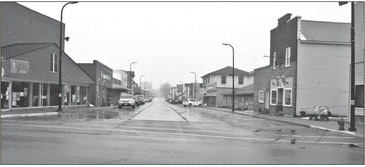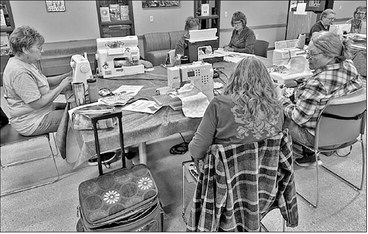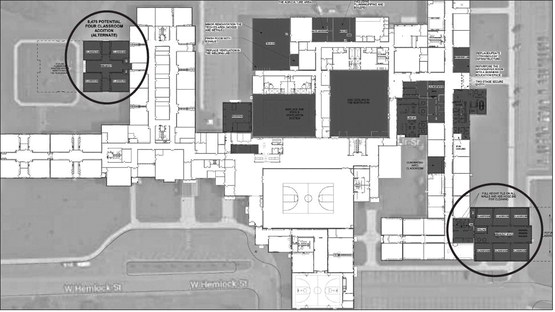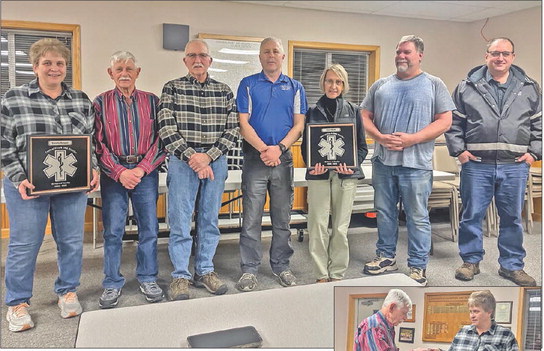Abbotsford plans to repave Main Street in 2025


The city of Abbotsford discussed plans to add a North First Street repaving and beautification project to the city’s five-year street plan at its common council meeting on April 3.
The council discussed targeting Community Development Block Grant (CDBG) funds for the project. Originally, the CDBG was going to be used for the city’s upcoming Fifth Street reconstruction project. However, the city was granted CDBG funds for a recent water project and wasn’t able to apply for the CDBG funds until 2025.
Instead, the city decided to apply for the Local Roads Improvement Program (LRIP) to fund the Fifth Street project.
The project, which would now be scheduled for 2024, would need to be scaled back from the original plan for the street.
“If we could scale that down to like an $800,000 project, then it falls into the LRIP,” Director of Public Works Craig Stuttgen said.
He suggested scaling the Fifth Street project down to cover the worst parts of the road, including an area between Oak and Maple roads. Tackling that portion of the road would still allow the city to replace storm sewers that have been in need of replacement.
That opened the discussion as to what the next CDBG funds would be used for. The funds are typically used for a larger project as the maximum amount awarded to municipalities is $1 million.
To receive the maximum award, the city would need to match the contributed funds by a minimum of $500,000, meaning a project would need to at least total $1.5 million in order to get the maximum amount of benefit from the CDBG funds. Stuttgen introduced the idea of redoing North First Street (Main Street) and using the CDBG funds for that project.
He said a large majority of the infrastructure under the road would not need to be replaced. He said the replacement of some of the water mains began in the 90s and was finally completed in 2013.
He said the project would focus more on repaving the road and cleaning up some of the broken up curb and gutter.
Stuttgen noted that, because it is a main area for people to gather in the city, he would suggest the council form a Main Street committee in order to get more people’s opinions on what elements would be included in a reconstruction project. He said there are options that could increase the “beautification” of the most popular area in the city.
“The money would go a long ways for a lot of beautification,” Stuttgen said. “What would be nice to see is new street lighting, colored sidewalks, maybe stamped planks for the sidewalk, concrete flower planters instead of hanging them on the [light] poles.”
“I’m sure most of you come through on the weekend every now and then,” Stuttgen said. “Main Street is hopping. You can’t find a spot to park.”
Stuttgen said he has heard some public chatter on fixing the road but said the committee would ensure people who want to have input on the project, can have input on the project.
He said the committee could put together a wish list with pricing on different aspects of the project and the council could go through and decide what they want to do with the street.
“I’ve had residents say that we have to do something with Main Street–fix Main Street back up,” Stuttgen said. “Like Dan [Borchardt] said, there’s a lot of funding available for [the CDBG] so you want to pick a bigger project.”
Dan Borchardt of MSA said the city would not need to do a random, community- wide income survey in order to complete the project at this time because the city’s low to moderate income numbers come in above the threshold for the CDBG application to bypass the survey. He said those numbers could change by the time the city is ready to apply and they would then have to conduct the survey before an application could be submitted and accepted.
He noted a neighborhood survey would likely need to be completed for the northern section of road because that is a residential area and would not be reconstructed for community-wide benefit.
Borchardt said MSA most recently performed a project similar to this in Amery where a $3.8 million project was partially funded using $2 million in grants. That project also included a safe drinking water loan and a clean water fund program.
He said Augusta did a similar funding strategy which had the city paying just over half of its $4.2 million bill for a street project. In both cases, he said the city’s debt service that was tied to the project was funded using money from the city’s local TIF district funds. He alluded to the fact that Abbotsford could similarly use TIF funds to pay for the money it would have to borrow for a potential Main Street project.
At this time, there have been no preliminary estimates done on what a Main Street reconstruction project would cost. The item was a discussion piece and therefore no official action was taken but the item will appear on a future council or planning commission agenda.
The council approved the sale of two sections of land in the city’s TIF Districts at its meeting on April 3. Among the two developments will be a dry storage facility for Abbyland on Business 29 next to the Abby Inn. The two parcels were sold to Abbyland for $1 each.
The other parcels were sold for $1 to Scott Christensen who planned to put up a building in the new industrial park. Plans showed the building would be a warehouse with two store fronts.
City Administrator Josh Soyk said in both instances, the lots are sold for $1 because the amount of new tax revenue the developments will bring to the city, county and school systems will ultimately benefit the city and community.
Soyk said the city’s assessor estimated Christensen’s improvements would add $690,000 in assessed value which equates to $17,000 - $20,000 per year in tax payments to the city’s TIF fund. Over the remaining 14 years of the TIF district, the structure would add around $240,000 - $280,000 in increment.
n Stuttgen said there are a few projects in Abbotsford that are nearing completion. He noted that the Family Dollar/Dollar Tree store was now open. Witmer Furniture had just added a new roof and addition onto its existing building and Abby Appliance was finishing up building its new location. He said this has shown that the TIF district has been a major success and is bringing added business and revenue to the city.
“There’s a lot of stuff being built, so there’s some good things happening,” Stuttgen said.
n Borchardt said the city’s Cedar Street project will be going ahead as planned with construction scheduled to run from May 15 to July 14.
n Borchardt also said construction is expected to begin on one of the city’s water towers that was postponed from last year. Clark County recently raised its communication towers so that Viking Painting could begin work on repainting the exterior of the tower.
n Borchardt mentioned that two test wells showed promise. One well produced 18 gallons of groundwater per minute while the other produced 43 gallons per minute. Soyk said, on average, the city’s wells produce around 20 gallons per minute. The city will still need to decide whether to pursue both wells, one of them, or neither at an upcoming meeting.
n The council approved a new fiveyear street improvement plan to match what the council had decided with the aforementioned street projects.




